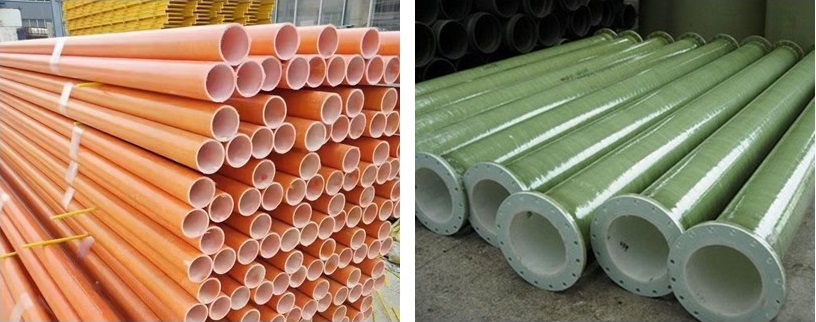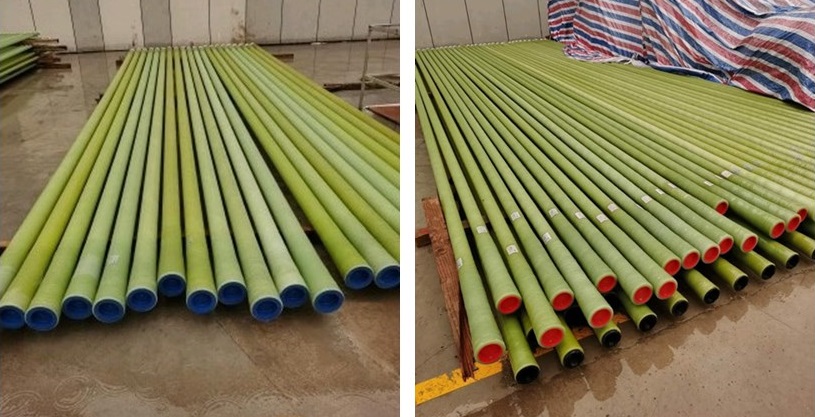PVC piping has been widely used in the municipal market for more than 60 years, initially in smaller diameters and now in sizes up to 60 inches. A variety of corresponding fittings and maintenance facilities have also been produced by manufacturers. FRP pipe is a new star in recent years, which has such advantages as light weight and corrosion resistance. WEITONG will explain the manufacturing standards and some differences between the PVC pipe and FRP pipe.
PVC and FRP pressure pipes are manufactured according to the current AWWA standards
PVC - AWWA C900 "PVC Pressure Pipe and Fabricated Fittings, 4" to 60
FRP - AWWA C950 "Fiberglass Pressure Pipe".
PVC pipe is homogeneous, which means that the same material is used throughout the thickness of the pipe wall. In contrast, FRP is a composite material consisting of multiple layers that may include an exterior surface layer, an interior liner, and an intermediate layer consisting of resin, filler, and fiber.

PVC pipe must conform to the outside diameter throughout its length, so that the cut-off pipe still has the proper dimensional tolerances for sealing at the sealed joints. This is not always the case for FRP pipe - if these pipes are cut, their ends may need to be calibrated to meet tolerances.
Both PVC and FRP are considered flexible pipes and use the same test to determine pipe stiffness: ASTM D2412 "Standard Test Method for Determining External Loading Characteristics of Plastic Pipes by Parallel Plate Loading". However, the PS values for these two materials differ significantly, which is important when considering excessive deformation during design and installation.
According to some studies, PVC pressure pipe has a life expectancy of 100 years or more. For FRP, the situation is not so clear: widespread failures in the 1980s required major changes in product standards and manufacturing methods. These changes occurred in the mid-1990s, so the service history of newer products is limited to about 20 years.
Want to know more about the difference between pvc pipe and frp pipe? Just contact us.

For large diameter pipe applications, FRP has several advantages.
1.Light weight and high strength: FRP products have low material density and high circumferential tensile strength.
2.Chemical resistance: In corrosive media, FRP shows superiority over other materials. Different base materials can resist many acids, alkalis, salts and organic solvents.
3.Designability: FRP can be adapted to meet different demanded media and working conditions by changing the combination of raw materials and the thickness of the inner liner, structural layer and outer anti-aging layer to adjust the physical and chemical properties of the product.
There are some significant differences between PVC and FRP pipe that should be considered as municipalities and engineers attempt to reduce costs and improve system performance, and utilities looking for large diameter pipe have proven options. If you have other doubts, please feel free to consult us and we will provide you with professional answers.